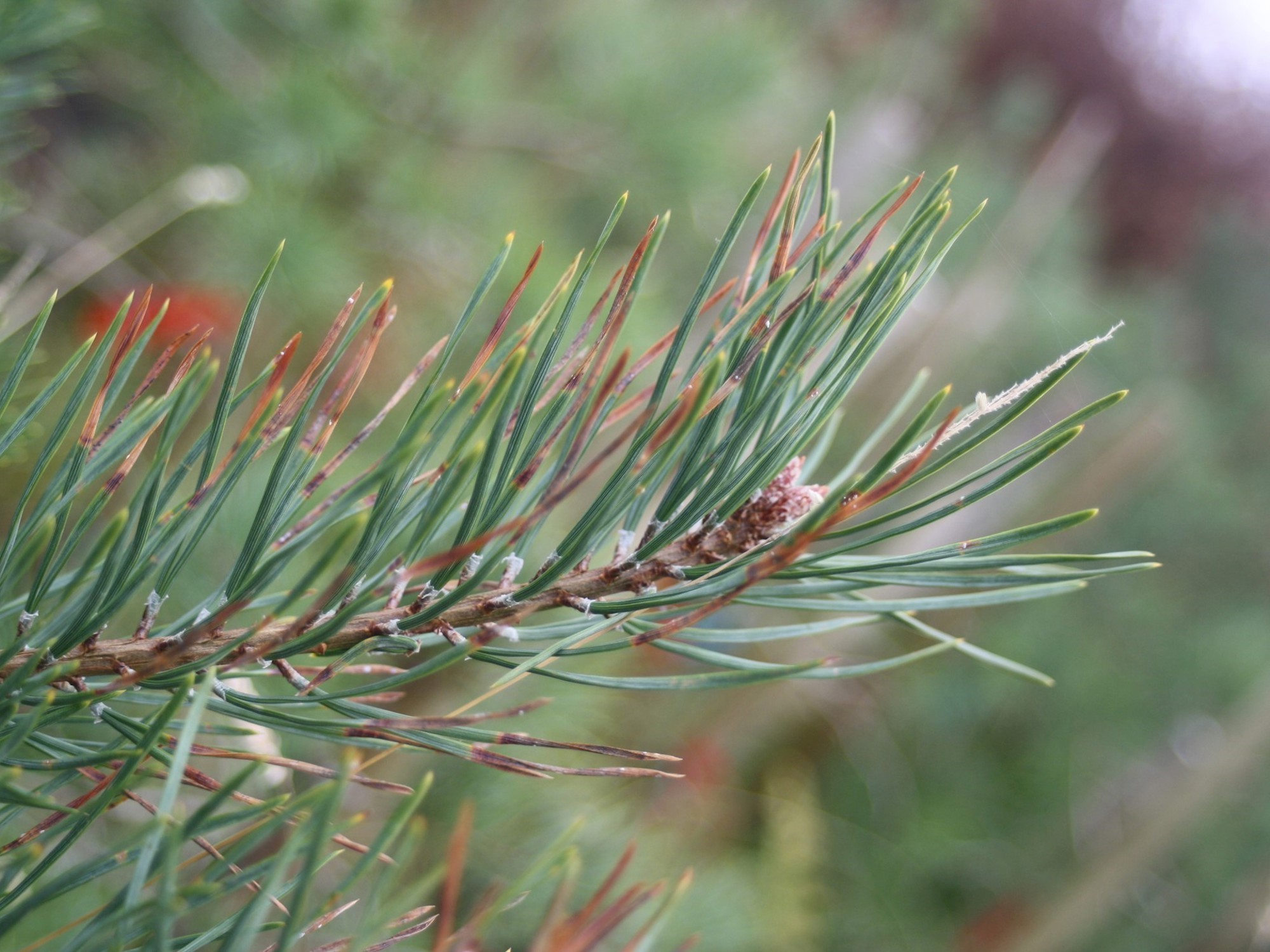Endophytic fungi occur inside healthy living plants. They are quite distinct from the fungi that grow on the surface of plants (epiphytic fungi). Some endophytes have very clear roles (such as the Clavicipitaceae endophytes which help protect certain grasses from grazing and environmental stress). In most cases the role of endophytic fungi is unknown, but they seem to range from beneficial to antagonistic in their interactions with plants.
The plant-endophyte relationship has been co-evolving for more than 300 Ma. This is evident by the fact that many endophytes will only infect certain hosts, for example Lophodermium species associated with genera in the plant family Pinaceae. Lophodermium is in the fungal order Helotiales which often dominate the fungal endophyte communities of gymnosperms, whereas angiosperms are often dominated by members the Diaporthales.
In order to study endophytic fungi, plant material must be surface sterilised and then isolations can be made or metabarcoding can be undertaken. At RBGE endophyte research involves a combination of both approaches and is centred on foliar fungi associated with important forest trees such as the native Scots pine (Pinus sylvestris) and exotic conifers such as Sitka spruce (Picea sitchensis), Norway spruce (Picea abies) and Douglas fir (Pseudotsuga menziesii). Studies include basic empirical research to investigate the endophyte communities and also experimental work to determine effects such as relative importance of host species and environmental factors. In addition, genome ’contaminants’ (including endophytic fungi, normally removed during quality control in genome sequencing) have been analysed to provide insights into endophytic communities in Streptocarpus.
Selected Publications:
Taylor, J.E., Schönrogge, K., Oliver, A., Cavers, S., Cottrell, J., Perry, A., Gibbs, M. and Ennos, R. (2025). Effects of fungicide application on the foliar endophytic fungi of Scots pine (Pinus sylvestris). Fungal Ecology, 101438.
Jones, A., Taylor, J.E. and Ennos, R.A. (2025) Foliar fungal endophyte communities of Scottish plantation pines. Journal of Fungi 11, 148. https://doi.org/10.3390/jof11020148
Taylor, J.E. and Koukol, O. (2023). Towards resolving Nothophaeocryptopus and Rhizosphaera inhabitants of spruce needles. Forest Pathology, 53(3), p.e12807.
Schönrogge, K., Gibbs, M., Oliver, A., Cavers, S., Gweon, H.S., Ennos, R.A., Cottrell, J., Iason, G.R. and Taylor, J.E. (2022) Environmental factors and host genetic variation shape the fungal endophyte communities within needles of Scots pine (Pinus sylvestris). Fungal Ecology 57-58, 101162.
Taylor, J.E., Ellis, C., Ennos, R. and Hollingsworth, P. (2020) Tissue age and tree age effects on endophyte species abundance of Pinus sylvestris (Scots pine) in an ancient semi-natural woodland in Scotland. Sydowia, 71, 35-46.
Anderson Stewart, C., Taylor, J.E., Doilom, M. (2018) Analysis of fungal endophytes of Sitka spruce in Scottish plantations shows extensive fungal infections, novel host partners, and provides insight into origins. Forest Pathology 49, e12471.
Iason, G.R., Taylor, J.E. and Helfer, S. (2018). Community-based biotic effects as determinants of tree resistance to pests and pathogens. Forest Ecology and Management 417, 301-312.
Gweon, H.S., Oliver, A., Taylor, J.E., Booth, T., Gibbs, M., Read, D.S., Griffiths, R.I. and Schonrogge, K. (2015). PIPITS: an automated pipeline for analyses of fungal internal transcribed spacer sequences from the Illumina sequencing platform. Methods in Ecology and Evolution 6, 973–980. https://doi.org/10.1111/2041-210X.12399

